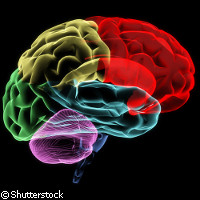Older brain regions key to unconscious learning
New research bolsters the idea that older brain regions are involved in our unconscious learning ability. The findings could potentially be used in the development of novel treatments for conditions such as Parkinson's and Huntington's disease, which involve these parts of the brain. The study, published online ahead of print in the Proceedings of the National Academy of Sciences (PNAS) journal, involved scientists from the Karolinska Institutet in Sweden and the National Institute of Neurological Disorders and Stroke, which is part of the National Institutes of Health (NIH) in the US. Many everyday tasks, such as buttoning up a shirt, require us to carry out a sequence of discrete movements in the right order. For a long time, scientists have known that we draw on two learning systems for these kinds of movement patterns. Under the explicit learning system, we make a conscious effort to train our brains and are aware of what we are learning. In contrast, implicit learning is not done consciously or intentionally; we learn without thinking about it, for example through simple repetition. In practice, distinguishing between these two forms of learning is tricky, because as the researchers point out in their paper, 'most learning measures can be influenced by both implicit and explicit knowledge to an unknown degree'. The basal ganglia lie deep within the brain and are heavily involved in both learning and motor control. Dopamine, a substance that transmits signals between neurons, is key for the plasticity of the basal ganglia and our ability to learn. In this study, the researchers investigated the roles of different parts of the basal ganglia in the implicit and explicit learning of motor sequences by looking at the numbers of dopamine D2 receptors in 15 healthy adult volunteer test subjects. In order to differentiate between implicit and explicit learning, the team used a process dissociation procedure (PDP), in which test subjects' performance in two tasks is compared. In the first task, both explicit and implicit knowledge enhanced performance, while in the second task, explicit knowledge facilitated performance while implicit knowledge impaired it. The results revealed a correlation between the density of dopamine D2 receptors and both forms of learning. Crucially, the study demonstrated that the limbic striatum, part of the basal ganglia, is only involved in implicit learning. From an evolutionary point of view, the limbic striatum is the oldest part of the basal ganglia, being present in relatively primitive vertebrates such as lampreys, reptiles and amphibians. 'Our results strongly substantiate the theories that say that the implicit, by which I mean non-conscious, learning systems of the brain are simpler and evolutionarily older,' commented Professor Fredrik Ullén of the Karolinska Institutet, who led the research. 'In other words, we probably have certain fundamental learning systems in common not only with rats, mice and other mammals, but also with the most primitive vertebrates, which also have a limbic striatum.' A greater understanding of our two learning systems may eventually aid researchers seeking new ways of treating Parkinson's and Huntington's disease, which involve the basal ganglia and are characterised by a loss of motor skills.
Countries
Sweden, United States



